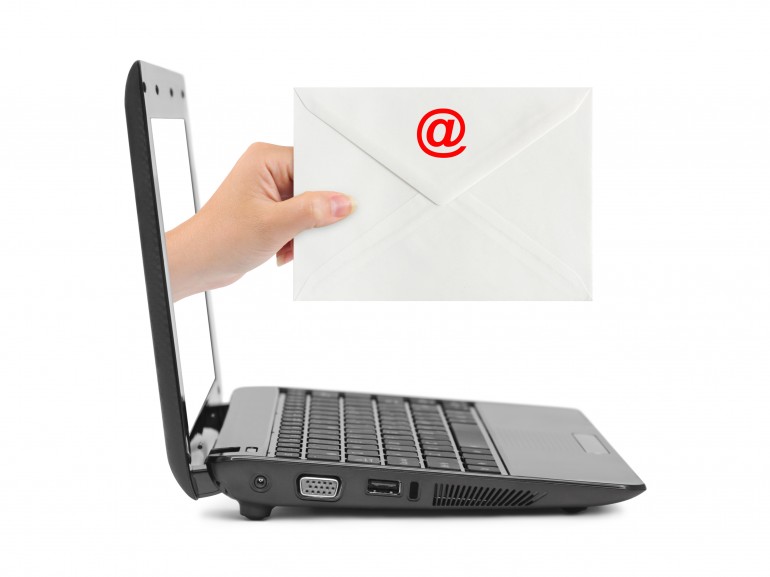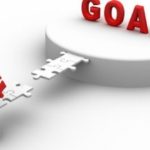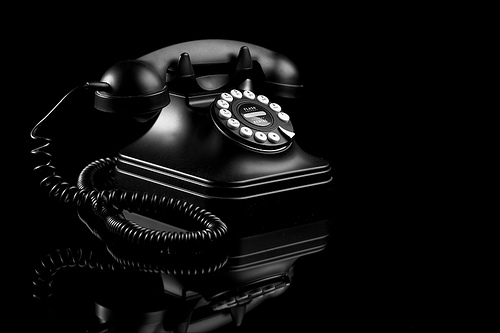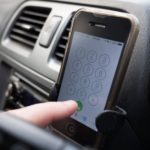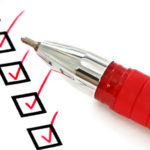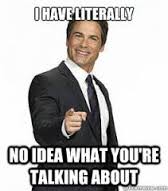 Is there a brick wall impeding your path to sales success?
Is there a brick wall impeding your path to sales success?
Most sales people experience some sort of struggle achieving targets at some point in their careers. In many cases, this can be due to the company’s lack of proper management, support, or setting their reps up for failure by creating unrealistic targets however that is not always the case. All too often, underachieving sales representatives may point the finger at their superiors as the reason for their failure and simply because it is easier to blame someone else than it is to accept one’s own weaknesses and take the steps necessary to improve.
Last month, I wrote about “5 Sure-fire Ways to Lose Your Best Sales Reps” which focused on common mistakes that companies make when managing their sales reps which typically cost them their best employees. Today, I will be focusing on the other end of the spectrum and outlining some of the most common problems that salespeople face which can impede their performance.
Some common barriers to sales performance include:
1. Fear of rejection and Lack of Confidence (inability to execute):
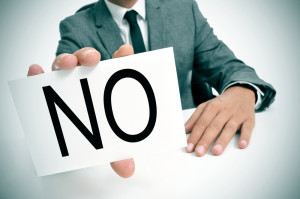 This is THE #1 obstacle that all sales people must overcome. In sales, you are confronted with the possibility of rejection more than almost any other profession and it takes many shapes and forms. For instance, one may fear that in spite of their efforts, clients may simply ignore their calls and emails, say “no” when asked for the order or just tell them to buzz off entirely. It’s easy to get bogged down by such negative results, but in sales, you have to pick up your head and move along to the next prospective client. So, as I always told myself, “Suck it up princess” Move on and pick up that phone or get back to pounding the pavement and keep in mind that as the common saying goes, “The greatest barrier to success is the fear of failure.”.
This is THE #1 obstacle that all sales people must overcome. In sales, you are confronted with the possibility of rejection more than almost any other profession and it takes many shapes and forms. For instance, one may fear that in spite of their efforts, clients may simply ignore their calls and emails, say “no” when asked for the order or just tell them to buzz off entirely. It’s easy to get bogged down by such negative results, but in sales, you have to pick up your head and move along to the next prospective client. So, as I always told myself, “Suck it up princess” Move on and pick up that phone or get back to pounding the pavement and keep in mind that as the common saying goes, “The greatest barrier to success is the fear of failure.”.
The best thing you can do, is take the correct course of action. The next best thing you can do, is to take the incorrect course of action. The worst thing you can do is nothing at all.
2. Difficulty prospecting and qualifying leads:
 So many sales people say, “Get me in front of the client and I will close!” but how does one get this opportunity of they do not prospect properly or effectively and fill their pipeline with qualified leads? That’s right, it doesn’t happen. In order to find new prospects, the easiest and most effective means is to obtain referrals from your existing client base. In the event that you have already exploited your existing network for new business referral, you will have to stick your neck out there and find new business and start cold calling. Yup, that’s right, I said cold calling, the biggest source of fear for sales reps fearing rejection. I suppose that is why so many self-proclaimed sales experts who hide behind a computer all day are claiming that cold calling is dead. In my opinion, those people are just too chicken s%^& to pick up the phone and cold call! For tips on how to cold call with tact, read my post on “The Do’s and Don’ts of Cold Calling”. Once you have filled your pipeline full of new prospects, you must learn how to qualify those leads in order to ensure you are most effectively utilizing your time and resources. For some tips on how to qualify leads, be sure to read “How to Qualify Leads and Not Get Lead Astray”.
So many sales people say, “Get me in front of the client and I will close!” but how does one get this opportunity of they do not prospect properly or effectively and fill their pipeline with qualified leads? That’s right, it doesn’t happen. In order to find new prospects, the easiest and most effective means is to obtain referrals from your existing client base. In the event that you have already exploited your existing network for new business referral, you will have to stick your neck out there and find new business and start cold calling. Yup, that’s right, I said cold calling, the biggest source of fear for sales reps fearing rejection. I suppose that is why so many self-proclaimed sales experts who hide behind a computer all day are claiming that cold calling is dead. In my opinion, those people are just too chicken s%^& to pick up the phone and cold call! For tips on how to cold call with tact, read my post on “The Do’s and Don’ts of Cold Calling”. Once you have filled your pipeline full of new prospects, you must learn how to qualify those leads in order to ensure you are most effectively utilizing your time and resources. For some tips on how to qualify leads, be sure to read “How to Qualify Leads and Not Get Lead Astray”.
3. Ineffective Communication:
 In sales, it is absolutely essential to listen to your client more so than it is to pitch them your product or idea. You must understand your client’s business, their needs, wants and their language. If you spend your entire sales call talking AT your client, you will never get the sale. A two-way dialogue is essential to close a deal. In addition, if you bombard your client with corporate jargon or industry buzzwords that only your company knows, you will never be able to communicate value to your client. You might as well be speaking another language.
In sales, it is absolutely essential to listen to your client more so than it is to pitch them your product or idea. You must understand your client’s business, their needs, wants and their language. If you spend your entire sales call talking AT your client, you will never get the sale. A two-way dialogue is essential to close a deal. In addition, if you bombard your client with corporate jargon or industry buzzwords that only your company knows, you will never be able to communicate value to your client. You might as well be speaking another language.
4. Disorganization & Inefficient Work Process:
 Time is money and money is time. Mismanage that and it will be detrimental to your success. Each day, sales people are bombarded with multiple emails, phone calls, meetings, follow-up requests, reports and if these tasks are not organized and prioritized in some fashion, most of those tasks will never be completed correctly or at all. I obviously can’t summarize this massive topic in one paragraph but in summary, in spite of how amazing your memory may be, be sure to always make a “to-do list” and block off areas in your calendar to complete all of your tasks even if that means seeing one less client each day or having a dedicated office day.
Time is money and money is time. Mismanage that and it will be detrimental to your success. Each day, sales people are bombarded with multiple emails, phone calls, meetings, follow-up requests, reports and if these tasks are not organized and prioritized in some fashion, most of those tasks will never be completed correctly or at all. I obviously can’t summarize this massive topic in one paragraph but in summary, in spite of how amazing your memory may be, be sure to always make a “to-do list” and block off areas in your calendar to complete all of your tasks even if that means seeing one less client each day or having a dedicated office day.
5. Too Much or too Little Information:
 Some companies provide their sales representatives with far too much information and literature without any focus provided by management. I once worked for a company that had hundreds if not thousands of products. My entire trunk was full of literature. There was a general focus, but even that limited it to a few hundred products. Sure there was always something to sell, but it was overwhelming. I eventually just picked a handful of products that I focused on exclusively. On the other hand, some companies provide close to zero information to their reps. This can be dangerous for the company because who knows what the rep will end up saying to their prospective clients?
Some companies provide their sales representatives with far too much information and literature without any focus provided by management. I once worked for a company that had hundreds if not thousands of products. My entire trunk was full of literature. There was a general focus, but even that limited it to a few hundred products. Sure there was always something to sell, but it was overwhelming. I eventually just picked a handful of products that I focused on exclusively. On the other hand, some companies provide close to zero information to their reps. This can be dangerous for the company because who knows what the rep will end up saying to their prospective clients?
6. Unhealthy lifestyle:
 Surprised to see this make the list? You shouldn’t be. Most sales reps are on the road for the majority of the day which makes it very difficult to find time to eat healthy and exercise. Over time, these poor health choices will affect one’s physical and mental well being which will ultimately cost you in your personal and professional life. For tips on how to improve your lifestyle en route, be sure to read my posts on How to Eat Healthy on the Road and How to Keep Fit on the Road.
Surprised to see this make the list? You shouldn’t be. Most sales reps are on the road for the majority of the day which makes it very difficult to find time to eat healthy and exercise. Over time, these poor health choices will affect one’s physical and mental well being which will ultimately cost you in your personal and professional life. For tips on how to improve your lifestyle en route, be sure to read my posts on How to Eat Healthy on the Road and How to Keep Fit on the Road.
Hopefully in reading this, if you are in sales, you are not impacted by any of these barriers to any significant extent. If you are struggling and confronted with potential job loss, it may be time to hire a sales coach. Contact me and learn how I can help you improve your sales game!
Happy sales!
Cheers,
TSW


